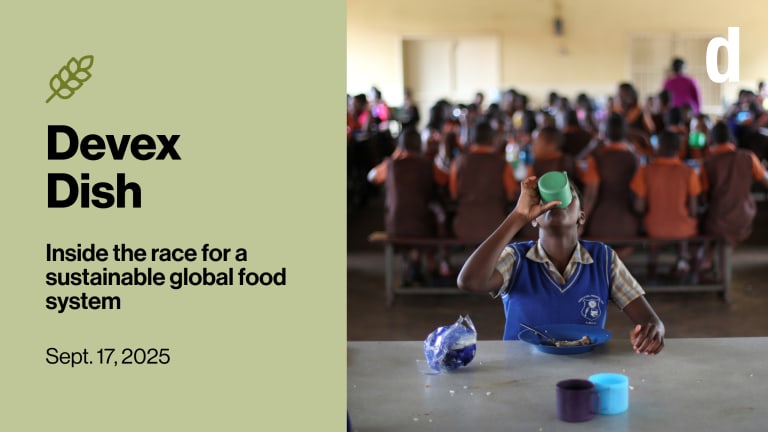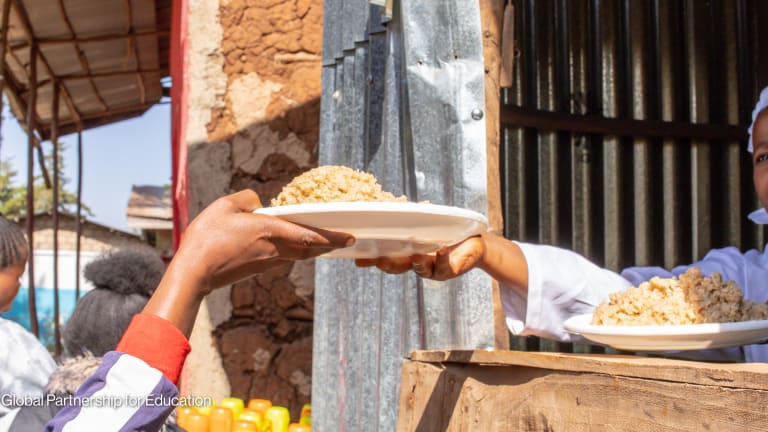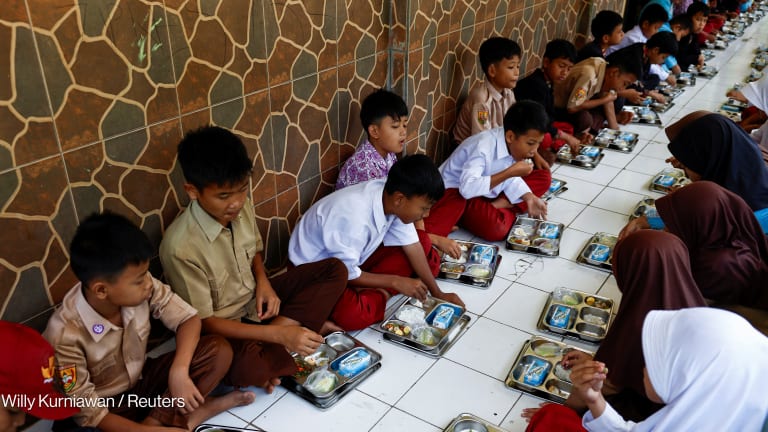5 things to know from the latest global survey on school meal programs
The full survey results aren’t available yet, but here’s a glimpse of how countries are doing on their school meal programs and how much they support small-scale farmers.
School meal programs have the potential to improve child nutrition, model healthy eating, and transform food systems. The latest available data however shows there’s much to be done in many countries globally to achieve these goals. An estimated 408.2 million children from age 3 upward in 169 countries received food through their schools in 2022, according to the 2024 Global Survey of School Meal Programs. Of that number, 379.3 million children and adolescents of primary and secondary school-age received school food — just one quarter of the 1.49 billion children and adolescents in this age group globally, added Ayala Wineman, research coordinator at the Global Child Nutrition Foundation, which conducted the survey. The data shows only 13% of school-aged children are receiving such meals in low-income countries versus 48% in high-income countries. But countries don’t just need to increase coverage rates. Below are several data points from the survey, highlights of which were presented on Tuesday at the Global Child Nutrition Forum in Osaka, Japan. The full survey is expected to be released in the first quarter of 2025. 1. Inflation hits budgets to feed children in schools Data from the latest survey has expanded since 2019. It now includes some data on the impact of school meal programs on the environment, how programs are reducing their climate footprint, how countries are advancing home-grown school feeding, and the impact of emergencies such as inflation and pandemics. The survey found that at least $67.2 billion was allocated to school meals in 2022 across 147 countries and that funding for school meals per child generally increased in low and middle-income countries. However, when adjusted for inflation, the budget per child has actually fallen in LMICs from $35.7 per child in 2017 to $28.04 in 2022. What does that mean in practice? Heidi Kessler, deputy director of GCNF, said the organization asked governments how they managed the shortfall. The response: “The various ways might be feeding less children. It might be changing the meal that's being served. It might be going from serving five days [of school meals] a week to three days a week,” or they increased the budget, she told Devex. 2. Unhealthy food is served in school meals, although this is ‘more common’ in wealthier economies While high-income countries have higher numbers of children receiving school meals and offer more food variety, it isn’t always considered “healthy.” According to the survey, in general, unhealthy foods such as processed meats, juices, or deep-fried foods were more common in school meal programs in higher-income settings. Country-level data showed some of these food items were in school meals offered in Brazil and South Korea, although some low and lower-middle-income countries such as Somalia and Benin also offered processed meat, sweets, and deep-fried foods. 3. External funding remains a critical lifeline for school meal programs in some countries On average, 73% of school meal programs were funded by domestic government sources, including national, local, and regional governments. However, some countries remain heavily reliant on external funding. In Malawi for example, 99% of the $15.5 million budget for school meals is funded by international donors. In Madagascar, 94% of the $69.5 million budget for school meals is funded by international donors. But some countries are taking more ownership. In East Timor, a lower middle-income country, the government covers 97% of the budget for school meals. 4. Support for small-scale farmers varies Experts say school meal programs can provide a stable and predictable market for smallholder farmers while helping to meet the nutritional needs of children. But the data shows that support for small-scale farmers and procuring from them as part of school meal programs isn’t the norm in many regions. On average, 43% of programs provided support to small-scale farmers, and 29% gave preference for contracting them for home-grown school feeding. Only 10% of programs had laws and policies that support linking small-scale farmers and school feeding programs. GCNF’s Wineman explained to Devex that many programs operate in settings with a heavy reliance on “spot markets” — this is where people meet in-person, unplanned, in a central market setting, and decide on an exchange in the moment. “Economies tend to evolve away from spot markets and toward contract-based exchange in the course of the process of structural transformation. So, it’s not really a surprise to see that contracts directly with farms are uncommon in lower-income settings. And in high-income settings, contracts offered by school meal programs are common but are more likely to be made with intermediaries,” she said. The data showed 53% of programs in low income settings gave preferential contracting to small-scale farms and businesses, but this drops down to just 29% in lower middle income countries, and 14% in upper middle income and high income countries. 5. Most programs have nutritional and health objectives Some school meal programs included fortified food items and 69% engaged nutritionists. Some also paired their programs with nutrition and physical education to prevent overweight and obesity. However, there’s no data on how much the programs reduced malnutrition. Kessler said measuring impact depends on the meals provided in countries and the nutritional status of the children receiving them. It’s also difficult to make data comparisons across countries given programs are differently designed and are run by different entities. “There's completely different school meal programs sometimes operating in one country. And so to know if this school meal has improved the nutritional status of this child would have to be a very directed study,” she said. However, she said there’s a large body of research showing the benefits of school feeding, such as on gender equity, improving children’s nutritional status, and education outcomes. It also has intergenerational benefits, according to a study done in India which found that women who received meals in primary school would be better nourished and more educated and consequently have children with improved linear growth.
School meal programs have the potential to improve child nutrition, model healthy eating, and transform food systems. The latest available data however shows there’s much to be done in many countries globally to achieve these goals.
An estimated 408.2 million children from age 3 upward in 169 countries received food through their schools in 2022, according to the 2024 Global Survey of School Meal Programs. Of that number, 379.3 million children and adolescents of primary and secondary school-age received school food — just one quarter of the 1.49 billion children and adolescents in this age group globally, added Ayala Wineman, research coordinator at the Global Child Nutrition Foundation, which conducted the survey.
The data shows only 13% of school-aged children are receiving such meals in low-income countries versus 48% in high-income countries.
This article is free to read - just register or sign in
Access news, newsletters, events and more.
Join usSign inPrinting articles to share with others is a breach of our terms and conditions and copyright policy. Please use the sharing options on the left side of the article. Devex Pro members may share up to 10 articles per month using the Pro share tool ( ).
Jenny Lei Ravelo is a Devex Senior Reporter based in Manila. She covers global health, with a particular focus on the World Health Organization, and other development and humanitarian aid trends in Asia Pacific. Prior to Devex, she wrote for ABS-CBN, one of the largest broadcasting networks in the Philippines, and was a copy editor for various international scientific journals. She received her journalism degree from the University of Santo Tomas.








